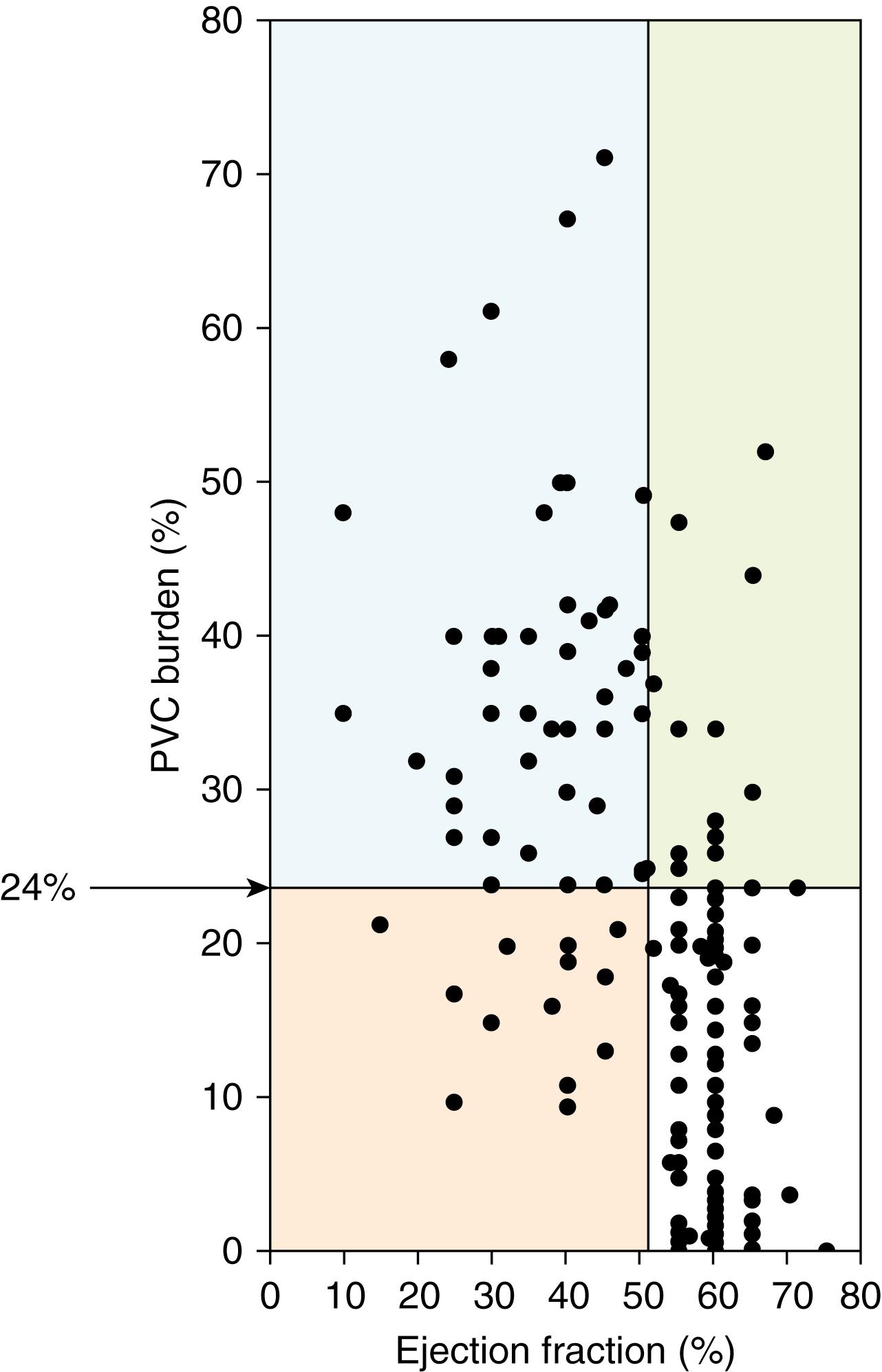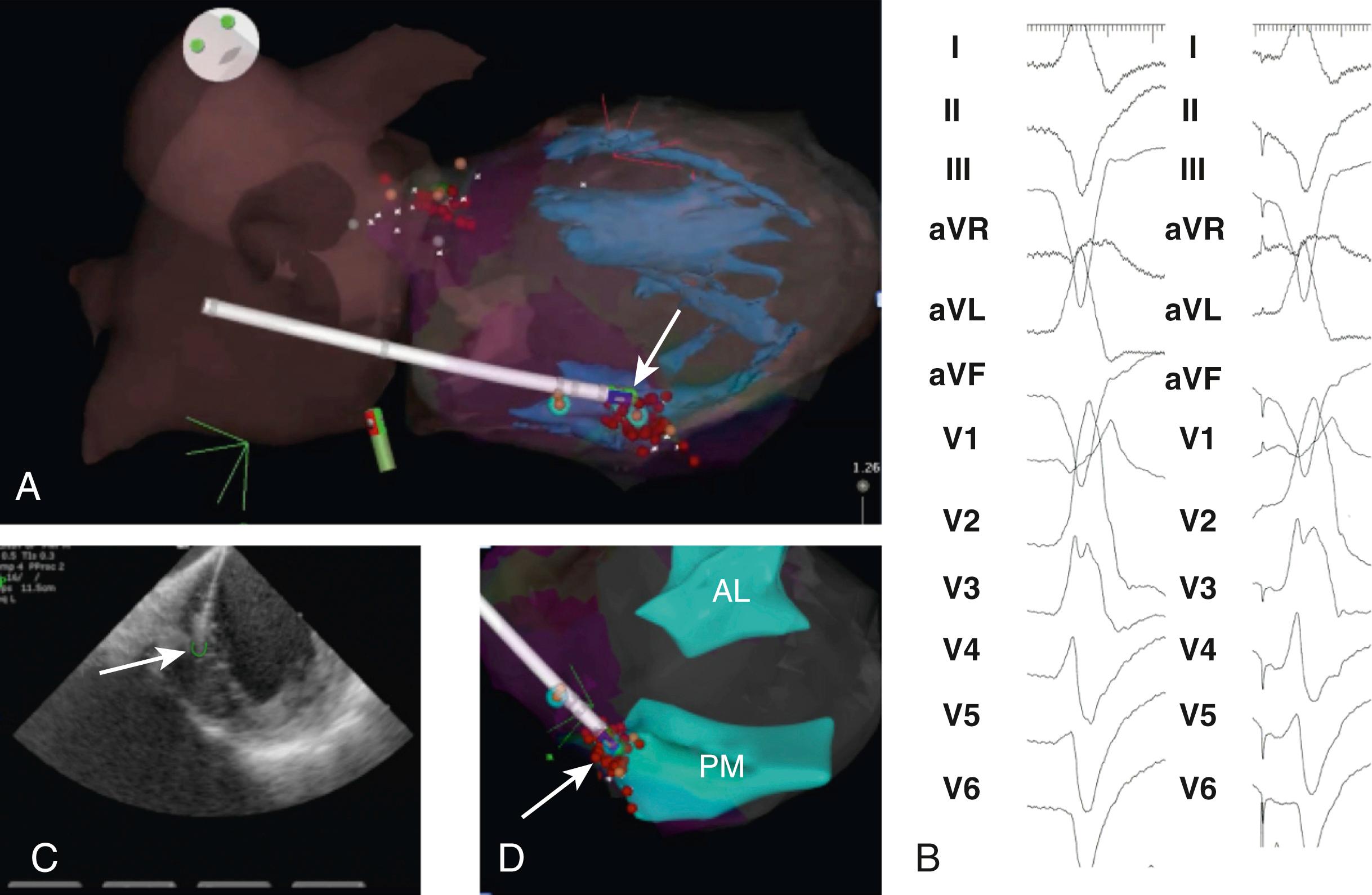Physical Address
304 North Cardinal St.
Dorchester Center, MA 02124
Irregularities in pulse and their association with poor outcomes have been recognized for centuries. The Chinese physician Pien Ts’Io, who lived around 6 bce , taught that occasional pulse irregularities did not predict an adverse outcome; however, frequent irregularities (1 in 10 beats) were linked with an ominous prognosis (often resulting in death within a year). Reliable differentiation of PVCs from other arrhythmias became possible only in the last century. In 1985 an investigation in patients with minimal or no structural heart disease demonstrated that the risk of death in patients with frequent PVCs was low. This study is often cited as showing that PVCs are benign arrhythmias; however, it was recognized that frequent PVCs can be a marker for the presence of cardiac disease. More recently, frequent idiopathic PVCs have been linked with the development of cardiomyopathy, a higher incidence of congestive heart failure, and increased mortality.
Interpreting prevalence and frequency of PVCs is dependent on the patient population studied and the duration of monitoring. The prevalence can range from less than 1% in healthy populations monitored for just 48 seconds to 62% when monitored for 6 hours. , Different qualitative definitions have been used to describe the prevalence of PVCs. In patients with prior myocardial infarction, a PVC burden greater than 10 PVCs per hour was defined as frequent and was associated with increased mortality. A much higher PVC burden is required for PVC-induced cardiomyopathy and a burden of greater than 10% was suggested in a recent expert consensus statement as sufficient to warrant monitoring for the development of PVC-induced cardiomyopathy.
The prevalence of PVCs depends on the presence or absence of structural heart disease. In healthy subjects, PVCs have been reported to occur in up to 75% of the general population; however, in most healthy subjects the burden is fewer than 100 PVCs per day. A higher burden of 60 PVCs or more per hour has been described in 1% to 4% of the population. The definition of high-frequency PVCs is variable and depends on the context of the patient population studied and the purpose of evaluation.
Initiation of PVCs is dependent on the underlying cardiac substrate and, similar to other arrhythmias, can be explained by reentry, automaticity, or triggered activity. The most likely mechanism of PVCs in patients without structural heart disease is triggered activity. Reentry has primarily been found and described in postinfarction animal models. In postinfarction patients PVCs usually originate in scar tissue and in the presence of inducible ventricular tachycardia (VT); the VT exit site often corresponds to the site of origin of PVCs. Even in patients with nonischemic cardiomyopathy, scar may be identified by magnetic resonance imaging (MRI) and can often harbor PVC sites of origin.
The potential for frequent idiopathic PVCs to result in cardiomyopathy has been established on the basis of reversibility of cardiomyopathy with successful elimination of the PVCs demonstrated in observational studies; however, the mechanisms responsible for development of cardiomyopathy are still under investigation. PVC-induced chronic left ventricular (LV) dyssynchrony is the most plausible mechanism for ventricular dysfunction, similar to other forms of dyssynchrony including right ventricular pacing or left bundle branch block. A recent swine model of pacing-induced cardiomyopathy showed fundamental differences from a tachycardia-induced cardiomyopathy and showed the severity of the ventricularly paced cardiomyopathy to be associated with LV dyssynchrony. This model also revealed the development of fibrosis with chronic ventricular pacing, particularly with epicardial pacing. The role of dyssynchrony and worse prognosis with epicardial or wider QRS complex PVCs is also seen in human studies. , It needs to be emphasized, however, that other animal models of PVC-induced cardiomyopathy failed to show fibrosis when histologic analysis of myocardial tissue was performed. How and whether the findings from the swine model can be applied to patients with frequent PVCs remains to be determined. Of note, only interstitial fibrosis was described, and no replacement fibrosis was observed, and the latter is what one would expect to detect as focal fibrosis areas by cardiac magnetic resonance (CMR) imaging (see Chapter 65 ). The presence of focal fibrosis identified by CMR is associated with PVC-induced cardiomyopathy in humans. Buildup of focal scar may be a time-sensitive process that may not be replicated precisely by short-term animal studies. Focal scar was described in the majority of patients with PVC-induced cardiomyopathy and the presence of scarring correlated with age, gender, hypertension, and chronic obstructive lung disease, all factors that are difficult to replicate in an animal model. Another recent animal study suggesting potential sustained effects in canines with ventricular pacing–induced cardiomyopathy showed a persistent effect on neural remodeling with extracardiac sympathetic hyperinnervation despite recovery of ejection fraction after cessation of ventricular pacing. These studies highlight the knowledge gap that still persists in understanding the cause and sequelae of PVC-induced cardiomyopathy and explaining the failure in some patients to recover full cardiac function despite elimination of the PVCs.
Factors associated with cardiac prognosis in patients with frequent PVCs include the presence of underlying cardiac disease and the nature of the PVCs. In postinfarction patients, predischarge documentation of more than 10 PVCs per hour correlated with increased 6-month mortality. A direct link between postinfarction VT and PVCs was established in a mapping study of patients with previous myocardial infarction. PVCs were mapped to the scar, and the site of origin of the PVCs often correlated with the VT exit site of an inducible VT. Elimination of the PVCs often led to the elimination of the VTs with the shared exit site.
Frequent PVCs (>30/h) have been associated with increased mortality in men without coronary artery disease. The primary risk in patients with frequent idiopathic PVCs seems to be progression to cardiomyopathy. Factors associated with increased risk of cardiomyopathy include higher frequency of PVCs, longer duration of PVC exposure, lack of symptoms, interpolated PVCs, epicardial PVC origin, increased PVC-QRS width, lack of circadian PVC variability, male gender, nonsustained VT, and longer coupled PVCs. ,
Although a PVC burden of greater than 24% has been associated with impaired LV function (sensitivity, 79%, specificity, 78%) ( Fig. 80.1 ), it is important to note that cardiomyopathy has also developed with considerably less frequent PVCs and has been reported with a burden as low as 4%. Furthermore, about 20% of the patients with a PVC burden greater than 24% did not develop cardiomyopathy. Several of the PVC-induced cardiomyopathy risk factors, including epicardial PVC origin and an increased QRS duration (>150 ms) of PVCs, support ventricular dyssynchrony as the primary mechanism resulting in LV dysfunction.

A recent population sample followed for more than 13 years showed that increasing PVC frequency (even at overall low burdens) was associated with decreased LV ejection fraction, congestive heart failure, and even mortality. The risk of SCD is an incompletely understood phenomenon in patients with PVCs. Certain risk factors include other underlying cardiac disorders such as sarcoidosis (see Chapter 109 ) or arrhythmogenic right ventricular dysplasia (see Chapter 90 ), PVCs with a very short coupling interval, the presence of scar on CMR, and inducibility of sustained ventricular arrhythmias on electrophysiology study. The presence of ventricular ectopy in patients with bileaflet mitral valve prolapse (see Chapter 94 ) has also been recognized as a risk factor for SCD, particularly in patients with papillary muscle and inferobasal wall fibrosis and mitral annulus disjunction ( Fig. 80.2 ).

Recently the presence of myocardial scar independent of coronary artery disease has been noted in up to 25% of patients referred for PVC ablation who had no apparent structural heart disease. Furthermore, 10% of the patients with scarring had inducible sustained monomorphic VT and received implantable cardioverter defibrillators (ICDs). The majority of patients in whom an ICD was implanted had appropriate therapy during follow-up. This study highlights the utility of risk stratification with preprocedural imaging looking for scar and programmed ventricular stimulation in patients undergoing PVC ablation procedures, a point that was emphasized in the expert consensus document issued by Heart Rhythm Study (HRS) in 2019. The presence of scarring appears to adversely affect the risk of SCD in patients with bileaflet mitral valve prolapse ( Chapter 94 ).
Become a Clinical Tree membership for Full access and enjoy Unlimited articles
If you are a member. Log in here